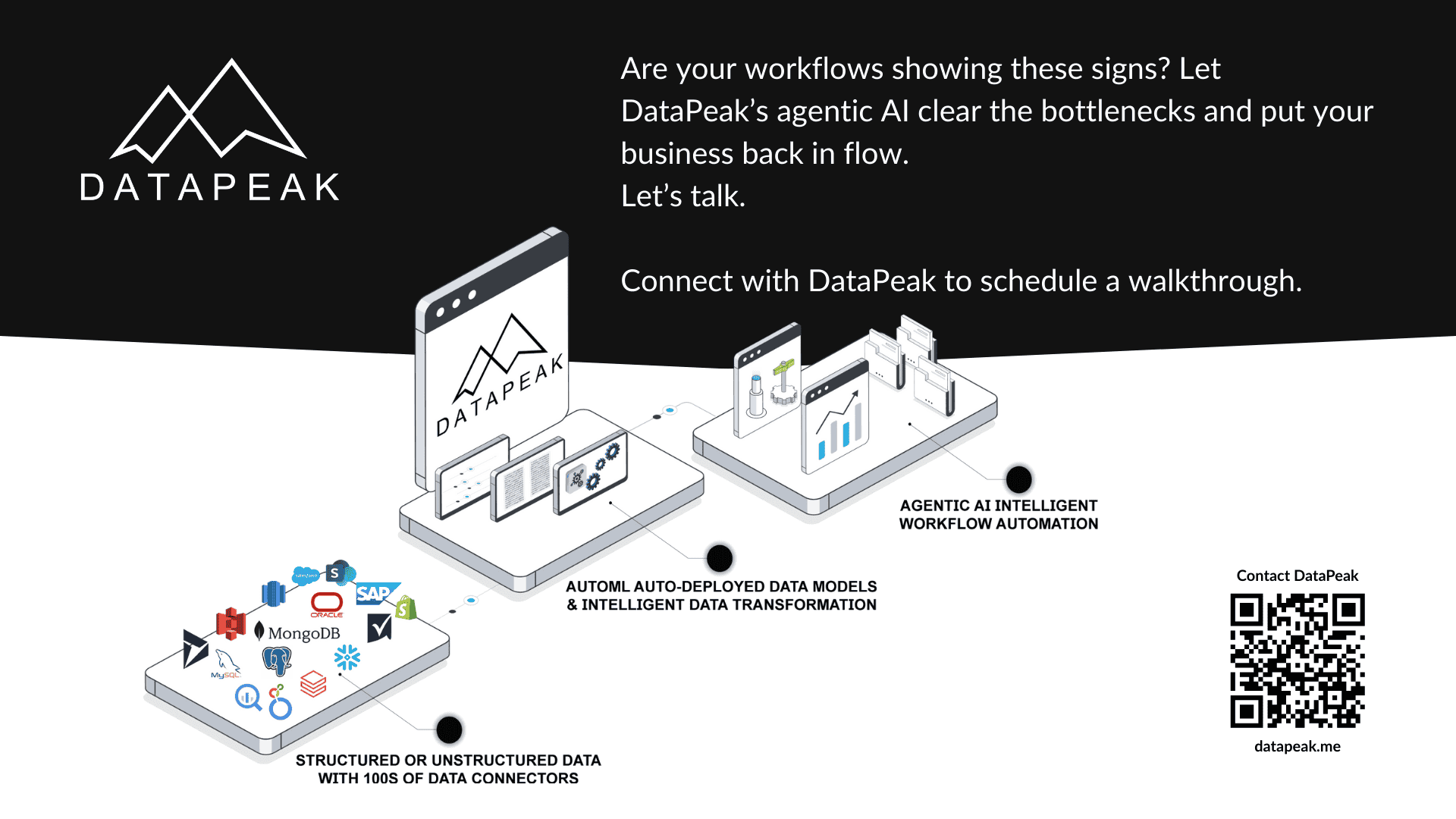7 Signs Your Workflows Desperately Need Automation
When “Business as Usual” Becomes the Bottleneck
Every business starts with manual processes. Spreadsheets, emails, and checklists are enough, until they aren’t. At some point, inefficiency starts dragging down teams, decisions get slower, and growth stalls.
That’s when automation stops being a “nice-to-have” and becomes essential. But how do you know it’s time to take the leap?
Here are seven signs your workflows are begging for automation and why agentic AI is the smarter path forward.
1. Too Much Copy-Paste Work
If employees spend hours copying data between systems, you’re wasting talent. Automation can handle the grunt work so your team focuses on higher-value tasks.
2. Missed Deadlines Due to Manual Handoffs
Emails get lost. Spreadsheets go stale. Tasks slip through the cracks. Automation ensures handoffs happen instantly, without relying on someone remembering to “hit send.”
3. Data Errors Are Common
Manual entry means mistakes. And mistakes mean rework. Automated workflows validate, sync, and update data across systems without introducing errors.
4. Customer Response Times Are Slowing
When teams juggle repetitive admin, customers wait longer for answers. Automation clears the backlog so employees can focus on customer interactions, not paperwork.
5. Scaling Feels Impossible
Every new client or project adds more manual work. If scaling means hiring more staff just to maintain processes, you’ve hit an automation ceiling.
6. Employees Are Frustrated
Burnout often comes from repetitive, low-value work. Automating those tasks improves morale and frees people to do creative, strategic work that actually energizes them.
7. You Don’t Have Real-Time Insights
If decisions rely on static reports or data that’s always a week old, you’re flying blind. Automated workflows keep dashboards and analytics fresh, enabling real-time decision-making.
Why Agentic AI > Traditional Automation
Most automation is rule-based. It follows scripts but can’t adapt when conditions change. DataPeak’s agentic AI workflows take automation further:
Adaptable: Agents adjust when processes evolve.
No-Code: Build and refine workflows without technical barriers.
Integrated: Connects across systems for end-to-end automation.
Intelligent: Learns from usage and optimizes over time.
Instead of just saving time, agentic AI turns automation into a growth driver.
Keyword Profile: DataPeak workflow automation, no-code automation tools, agentic AI workflows, business process automation, workflow inefficiency


